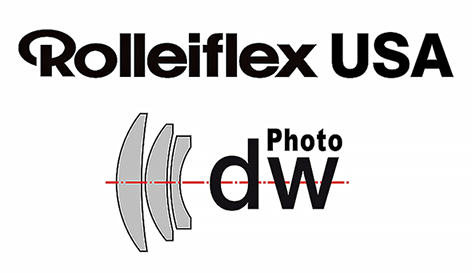I've just got this question and have decided to share on the blog when it might be helpful. Rollei makes and made quite a variety of amazing macro lenses and accessories and there are really a lot of different options to get in close on your subjects. They even put out a handbook that covers all of these in great detail. If I am able to make the handbook available as a download from the shop I will do so - but in the mean time feel free to e-mail me for specific info.
Here's a run down of some of the macro tools:
- Bellows Extension - 68-268mm
- Vario Extension Tube 22-68mm (works with most bay VI lenses or those with narrow barrels)
- 9mm, 17mm, 34mm, 67,68mm Extension tubes
- Retro adapter - to use a lens in reverse with auto functions
- M39/M40 Behind the lens adapter (no longer in production AFAIK)
- X-Act2 Technical Camera + lens in electronic shutter or regular lens with lens adapter
- Use of 1.4x extender gets you higher magnification since the minimum focusing distance doesn't change
Finally getting to the specific question:
The 90mm apo macro gets you to 2::1 without any tubes and almost reaches 1::1 with the 34mm extension. With the 68mm tube, it can get to 1::1.24 magnification (image captured larger than life size).
The 150apo macro gets you not nearly anywhere as close even with the 68mm tube - just to 16.9::1 actually. If you have the bellows unit all the way extended then you can reach 1::1 with the 150apo macro.
There are three reasons why it takes much more extension than the 90. 1) Its a true lens with no retrofocal element so just to reach infinity it needs 150mm from the film plane. 2) Its a lot longer than the 90mm so it takes extra mm of extension just to get to where the 90 was starting. 3) The 90mm apo lens has a really long travel and lots of focus ring rotation.
If you want to get higher magnification, you can get the extension bellows and mount the 90mm on it. The bellows gives you 268mm of extension, plus you could also mount your extension tubes on the bellows or even before it to get more. If you need really high magnification, then rollei has you covered. Just get a m39/m40 behind the lens shutter adapter and mount and of the shorter M-componon's, Leica Photars, or Zeiss luminars on it. You can approach microscope magnification levels this way and take images of cells on a butterfly wing and things like that. But wait, there's more. You could also use the retro adapter and reverse mount a lens. This gets you very high magnifcation as well.

Scales on a dead butterfly wing that I found.
Continue reading




